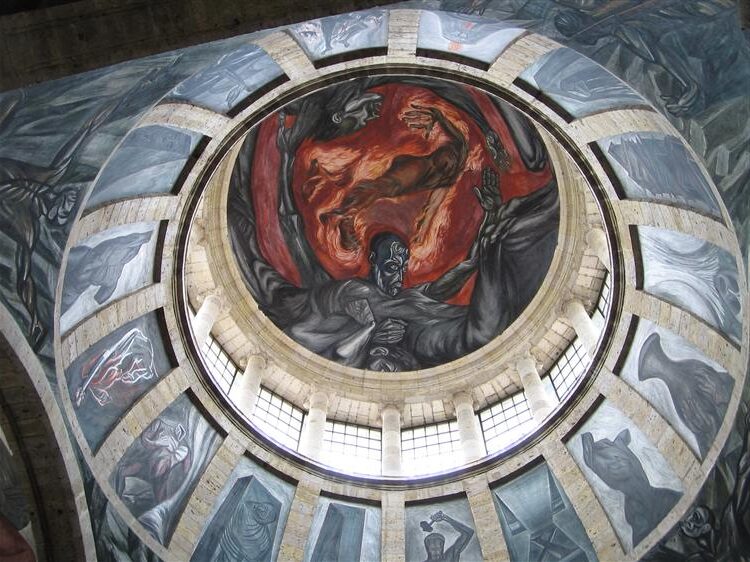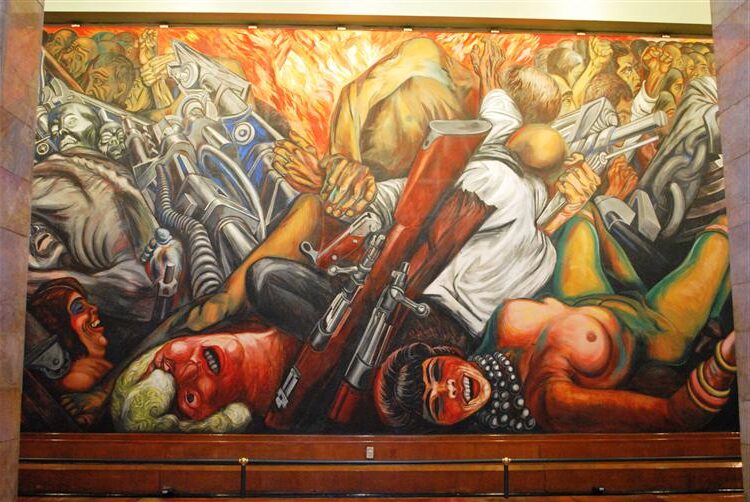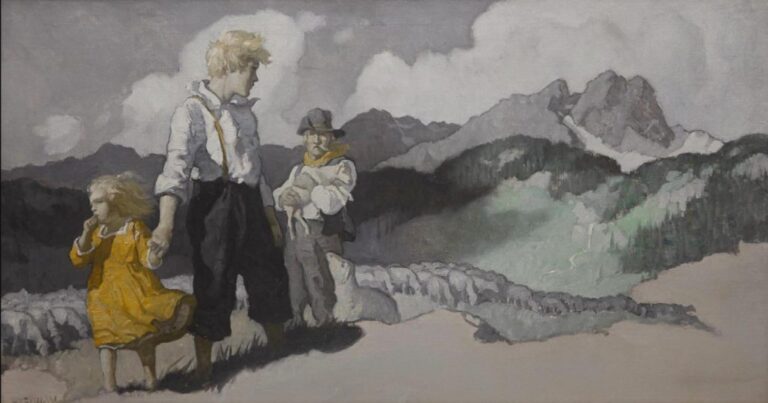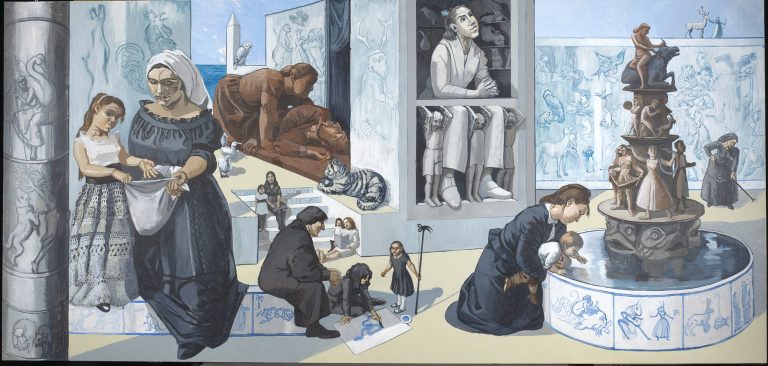Jose Clemente Orozco Paintings: A Mastery of Mural Art
Born: November 23, 1883, Ciudad Guzmán, México
Death: September 7, 1949, Mexico City, Mexico
Art Movement: Mexican Mural Movement, Social Realism
Nationality: Mexican
Friends and Coworkers: Diego Rivera and David Alfaro Siqueiros
Jose Clemente Orozco Paintings: A Mastery of Mural Art
Life and Career of Jose Clemente Orozco Paintings
José Clemente Orozco, a key figure in the Mexican Muralism movement, artfully captured the complex nature of human emotions and societal struggles. His life and career were shaped by his experiences in education, his rise during a transformative period, and his lasting legacy.
Early Years and Education
José Clemente Orozco paintings was born on November 23, 1883, in Ciudad Guzmán, Mexico. He moved with his family to Mexico City as a child, where he became exposed to the burgeoning art scene.

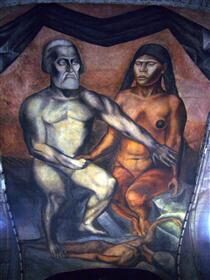
Daily walks past José Guadalupe Posada’s workshop sparked his early interest.
Orozco studied at the San Carlos Academy, where he honed his skills in painting and drawing. Despite losing his left hand in a gunpowder accident during his adolescence, he persevered in his artistic pursuits.
The education he received at the academy played a significant role in shaping his unique style. His initial interest in mathematics eventually gave way to a career dedicated to capturing the essence of post-revolutionary Mexico through art.
Rise to Prominence
During the 1920s, Orozco emerged as one of the leading figures in the Mexican Mural Renaissance. His work was prominently political, mirroring the turbulent atmosphere of post-revolutionary Mexico.
Alongside Diego Rivera and David Alfaro Siqueiros, he transformed public spaces with murals that depicted social injustices and human suffering.
His participation in the Mexican Revolution deeply influenced his approach, and his work often reflected themes of chaos and reform. One of his most notable projects was at the National Preparatory School in Mexico City. Here, his murals conveyed strong messages about the Mexican struggle and political change, earning him widespread recognition.
Final Years and Legacy
José Clemente Orozco continued to create impactful murals until his death on September 7, 1949, from heart failure. His later works carried the same intensity and thematic depth that characterized his earlier efforts.
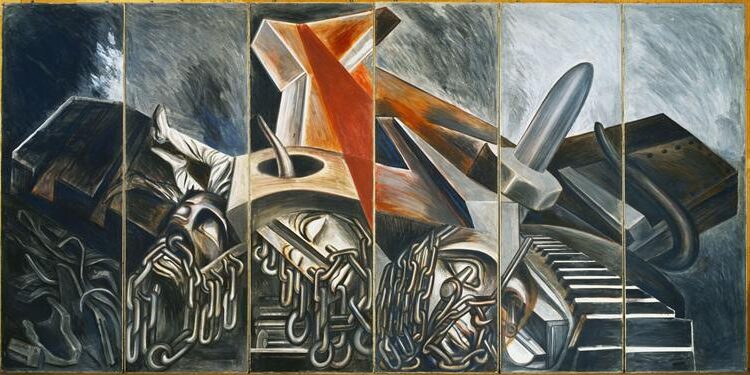
Dive Bomber and Tank (1940) by José Clemente Orozco
Murals such as those in Guadalajara and Dartmouth College in the United States demonstrate his commitment to portraying human emotion and conflict.
His legacy endures through the powerful imagery and evocative themes in his art. Orozco’s murals remain an important cultural symbol in Mexico, continuing to inspire future generations of artists to explore complex social and political issues through art.
Distinctive Themes in José Clemente Orozco paintings
José Clemente Orozco paintings, a central figure in Mexican muralism, often explored themes of human struggle and societal issues. His artworks are known for their bold depictions of reality and deep symbolic meanings.
Depiction of Human Suffering
Orozco frequently portrayed human suffering in his murals, capturing the intense emotions associated with conflict and hardship. His work highlighted the struggles of common people, often illustrating scenes of anguish and despair.
José Clemente Orozco Paintings like “Maternity” conveyed vulnerability and resilience, showcasing personal pain and universal struggles.

The Departure of Quetzalcoatl (1932–1934) by José Clemente Orozco
In his large-scale murals, such as “The Epic of American Civilization”, Orozco addressed the suffering caused by social and political upheavals. The gripping imagery invites viewers to confront harsh realities and empathize with those affected.
Social Realism and Political Engagement
Central to Orozco’s work is social realism, reflecting his engagement with political and societal themes. He utilized his murals to comment on pressing issues of his time, including inequality and oppression.
Orozco’s murals, such as those found in Mexico and the United States, are vivid representations of social and political dynamics. His painting style, which incorporates stark contrasts and intense imagery, emphasizes the urgency of these societal problems.
Through his art, Orozco called for justice and societal change, urging viewers to reflect on their roles in these systems.
Symbolism and Philosophical Narratives
Symbolism plays a crucial role in José Clemente Orozco paintings, offering layered interpretations beyond surface-level narratives. His works often featured complex symbols to express philosophical ideas and critiques of society.
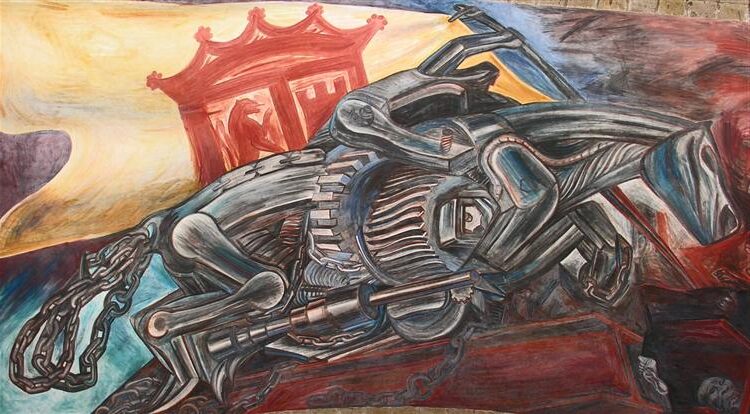
Ceiling Mural of Hospicio Cabañas (1939) by José Clemente Orozco
Artworks like “The Pearl” integrate symbols to discuss themes of purity and transformation within the human condition. Orozco’s fascination with machinery also symbolized both progress and dehumanization, capturing the dual nature of technological advancements.
This symbolic depth encourages viewers to ponder broader existential questions, highlighting the artistic and intellectual depth of Orozco’s paintings.
Notable Murals and Artworks
José Clemente Orozco is recognized for his strong and expressive murals. His works often tackle themes of human struggle, social injustice, and political turmoil.
Famous pieces such as “Prometheus” at Pomona College, the “Dartmouth College mural,” and the works inside Hospicio Cabañas in Guadalajara stand out as important contributions to art history. These murals showcase his unique style and impactful storytelling.
Prometheus at Pomona College
“Prometheus” is revered as one of José Clemente Orozco paintings masterpieces. Painted in 1930, it was one of the first major modern murals in the United States.

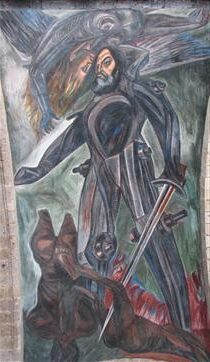
Located at Pomona College, the mural depicts the titan Prometheus who brought fire to humanity, an allegory for enlightenment and knowledge.
Orozco’s depiction is intense and dynamic, capturing the struggle and sacrifice of Prometheus. The mural’s vibrant colors and bold lines illustrate the drama of the narrative. This work is significant not just for its artistic prowess but also for its message of empowerment and resistance against oppression.
Dartmouth College Mural
The “Epic of American Civilization” is the title of Orozco’s famous mural at Dartmouth College in New Hampshire. Created between 1932 and 1934, this mural is composed of 24 panels. It tells a complex story of the Americas, from ancient Aztec civilizations to modern industrial society.
Highlighted panels include “Gods of the Modern World” and “Man in Battle Against Nature,” each exploring different aspects of human history and influence.
The mural examines the cycle of destruction and rebirth, presenting a critique of industrial and political powers. “The Epic of American Civilization” is now a National Historic Landmark for its cultural significance.
Hospicio Cabañas in Guadalajara
Located in the Hospicio Cabañas, this series of murals is considered Orozco’s magnum opus. The murals, completed between 1938 and 1939, cover a vast area and include themes such as “The Aristocrats,” “The Table of Universal Brotherhood,” and “Christ Destroys His Cross.”
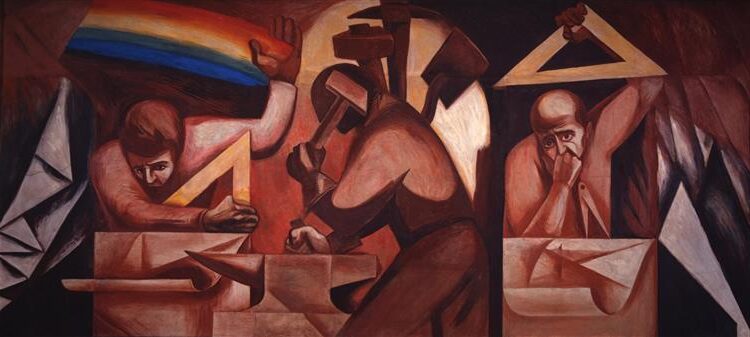
Call to Revolution and Table of Universal Brotherhood (1930–1931) by José Clemente
The narrative encompasses the destruction of outdated social systems and the hope for a better future. A key highlight, “The Man of Fire,” decorates the chapel’s dome and is renowned for its dramatic imagery, earning the chapel the nickname “Sistine Chapel of the Americas.” Hospicio Cabañas is recognized as a UNESCO World Heritage Site, underscoring its global importance.
José Clemente Orozco Paintings Influence and Legacy
José Clemente Orozco paintings played a significant role in shaping modern art, distinctively influencing artists and capturing the spirit of the Mexican Mural Renaissance. His works continue to be preserved and studied, demonstrating enduring relevance.
Impact on Contemporary Artists
José Clemente Orozco paintings have deeply influenced contemporary artists, particularly those embracing large-scale works and bold themes. He was part of “Los Tres Grandes” with Diego Rivera and David Alfaro Siqueiros. Together, they pioneered the Mexican Mural Renaissance, which inspired artists worldwide.
Notable figures such as Jackson Pollock and Philip Guston drew inspiration from Orozco’s dynamic forms and social themes.
Pollock admired Orozco’s expressive style, while Guston appreciated his ability to convey complex emotions. Their works show elements reminiscent of Orozco’s powerful techniques.
Preservation and Study of His Work
The preservation and study of Orozco’s murals are vital to understanding 20th-century art. Museums like the Museum of Modern Art have displayed and examined his work to provide insight into his methods and impact.

Catharsis (1934) by José Clemente Orozco
His murals, rich in political and social commentary, are often restored to retain their original vibrancy. This ongoing preservation work is crucial in showcasing Orozco’s mastery of the fresco technique and ensuring that future generations can study his contributions.
The dedication to preserving his art highlights Orozco’s enduring importance in the art world, underlining the continuous interest in his creative vision.
Frequently Asked Questions
José Clemente Orozco was a key figure in Mexican muralism, noted for his impactful works that often explored complex social themes. His artistic contributions continue to influence the art world.
What are some of the most famous works of José Clemente Orozco?
Some of José Clemente Orozco paintings most famous works include “The Epic of American Civilization” and “The Dartmouth Murals.” These paintings showcase his bold style and focus on historical events.
How has José Clemente Orozco contributed to Mexican muralism?
Orozco played a major role in the Mexican muralism movement alongside Diego Rivera and David Siqueiros. Together, they revived large-scale mural painting, making it accessible to a wide audience.
What themes did José Clemente Orozco typically portray in his paintings?
Orozco often depicted themes related to social justice, human suffering, and political conflicts. His works also explore the struggles and hopes of humanity, particularly in the context of Mexican history.
Can you describe the significance of the ‘Prometheus’ mural by José Clemente Orozco?
The “Prometheus” mural, located at Pomona College, symbolizes the quest for knowledge and defiance against oppressive forces. It’s considered a masterpiece that demonstrates Orozco’s ability to blend mythology with contemporary issues.
What events in José Clemente Orozco’s life influenced his artistic style and subjects?
Orozco’s experience during the Mexican Revolution deeply impacted his work. Losing a hand in a childhood accident also influenced his perspective, leading him to explore themes of human suffering and resilience.
What impact did José Clemente Orozco have on the art world posthumously?
After his death, José Clemente Orozco paintings influence continued to grow. His murals are studied in art history for their technique and social commentary. They inspire new generations of artists to use art as a medium for change.

